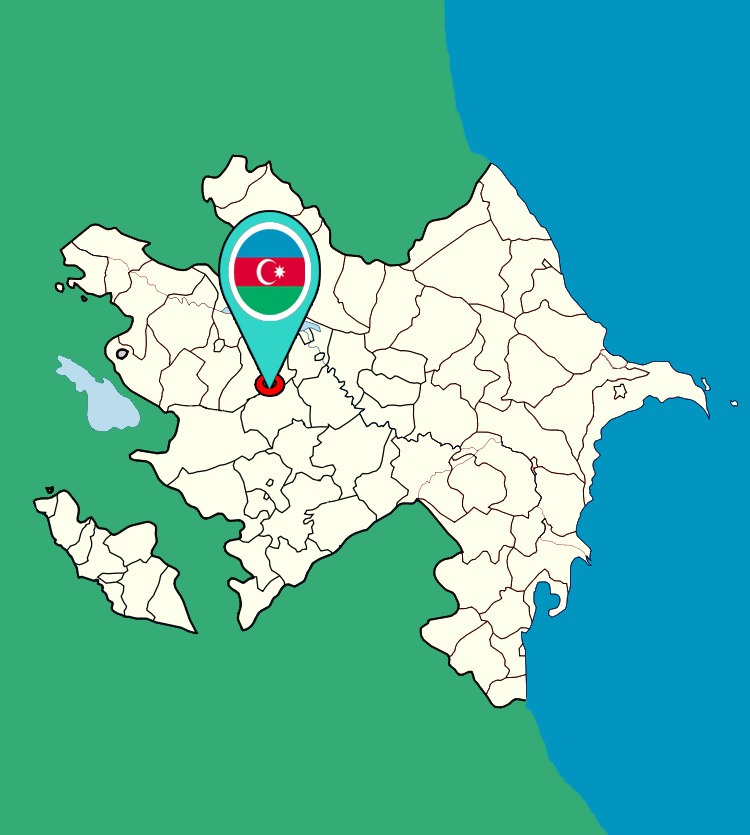Tours in Naftalan
Book now and enjoy with the best tours/excursions in Naftalan!No Trip matches your search criteira
Naftalan is a city in Azerbaijan, surrounded by the rayon of Goranboy. It is located on an agricultural plain near the Lesser Caucasus Mountains. The word naftalan also means a petroleum product which can be obtained there. It is the center of a unique petroleum industry, with a grade of oil referred to as "Naftalan".
The word Naftalan, can be traced to the Greek word "naphtha", meaning pertaining to oil, and the Azerbaijani suffix "-alan", which is of the verb "to take" (and literally meaning "oil buyer").
Archaeological findings in the region date to the 12th century AD. Naftalan city was functioning as a settlement within the Goranboy and Yevlakh districts until 1967. On April 28, 1967, Naftalan was granted the status of subordinate city. The city of Naftalan consists of a city and two villages. The base of Naftalan city is Sanatorium - Resort infrastructure. Naftalan Resort has been operating since 1933. In 1938, the Naftalan Experimental Laboratory was established in the Azerbaijan Scientific-Research Institute of Medical Rehabilitation. The biological and therapeutic effects of the Naftalan oil began to be studied there. Also, in 1965, Scientific Research Laboratory was established in Naftalan.
Medical oil called Naftalan is produced in the city. The qualities of Naftalan oil has been known since early times; Marco Polo noted them. The oil in the area was known to people as far as China and India, and was traded by caravans throughout countries of the Near East. Nizami Ganjavi, mentioned the transportation of Naftalan oil on caravans from the Safikurd village in the Khamsa poem.
Modern use of the oil has dated to the 1870s under Czarist Russia. By 1912, a German joint-stock company was founded to export and trade the oil, which was used as a treatment in the Russo-Japanese War. Research on the properties of the oil continues to be done at Azerbaijan Medical University and the Scientific Arthritis Center of Azerbaijan.
German geographer E.I. Yeger played a major role in spreading and popularizing Naftalan oil in the world. He sent 800 grams of Naftalan oil to Germany to explore its composition. 600 doctors who have examined it have written about the importance of the oil. He drilled the first well in 1890 and built a small factory to process it. There he produced lubricant oil. After the First World War the factory stopped functioning and was destroyed. The Naftalan lubricant oil recipe disappeared with it.
In 1904, during the Russo-Japanese War, the Japanese used this oil as a first medical aid. During the Great Patriotic War, it was used to treat wounds.
The Naftalan oil is has healing properties; it has been reputed for healing more than 70 diseases related to bones, skins and joints. Particularly, it has been used as an effective treatment of rheumatism, musculoskeletal system and urological and gynecological diseases.
In 2010s, the number of hotels increased in the city after Azerbaijani government's tourism policy.
Naftalan city is located 330 km west of Baku, 50 km from Ganja in the foothills of the Lesser Caucasus Mountains. It’s located at an altitude of 225 m above sea level. The spring is warm, the winter is soft here. The average annual temperature is +14.8 degrees. The wind in Naftalan is mainly monsoon. The city's territory is 35.73 sq km.
The area is home to petroleum spas (or "oil spas"), once popular vacation spots of the Soviet Union that are making a return in popularity. Oil from these spas is claimed to be an effective treatment against psoriasis, arthritis and rheumatism. At the height of their Soviet-era popularity, the spas in Naftalan had 75,000 visitors a year. The combination of violent ethnic conflict in nearby Nagorno-Karabakh and the end of Soviet-sponsored free trips brought the industry to its knees in the late-1980s. All but one of the older spas were converted into refugee housing. The remaining spa, the Naftalan Therapeutic Center, had 1,000-beds.
The number of domestic and foreign tourists coming to Naftalan, which has a capacity of about 2200 tourists a day, has increased by 5-6 times in 2016 and counted 30,000.
There is a library in the city. There are 32711 copies of books in the book fund of the library. There are two Houses of Culture that are engaged in promoting national traditions, providing cultural services to the population. Also, there is Naftalan Museum and Music School. There are four parks in the city of Naftalan: "Heydar Aliyev", "Samed Vurgun", "Nariman Narimanov" and "Victory" parks.
“Crutches” Museum; The exhibits of the museum are crutches. There are crutches of different types and sizes here. The reason is that sometimes patients who use crutches come to sanatorium for the treatment. When the treatment is completed, they no longer need the crutches, so they leave them in Naftalan.

No Trip matches your search criteira